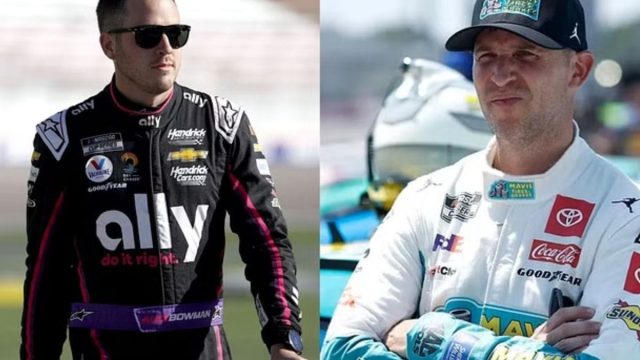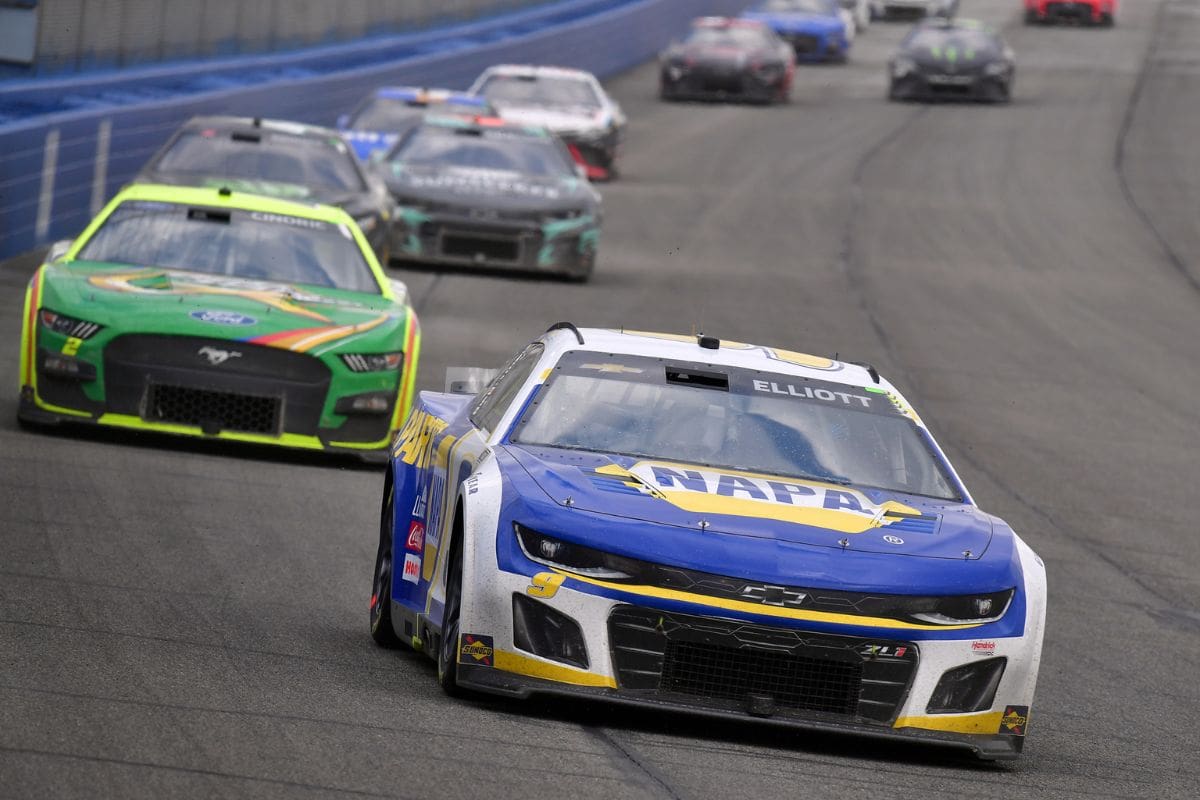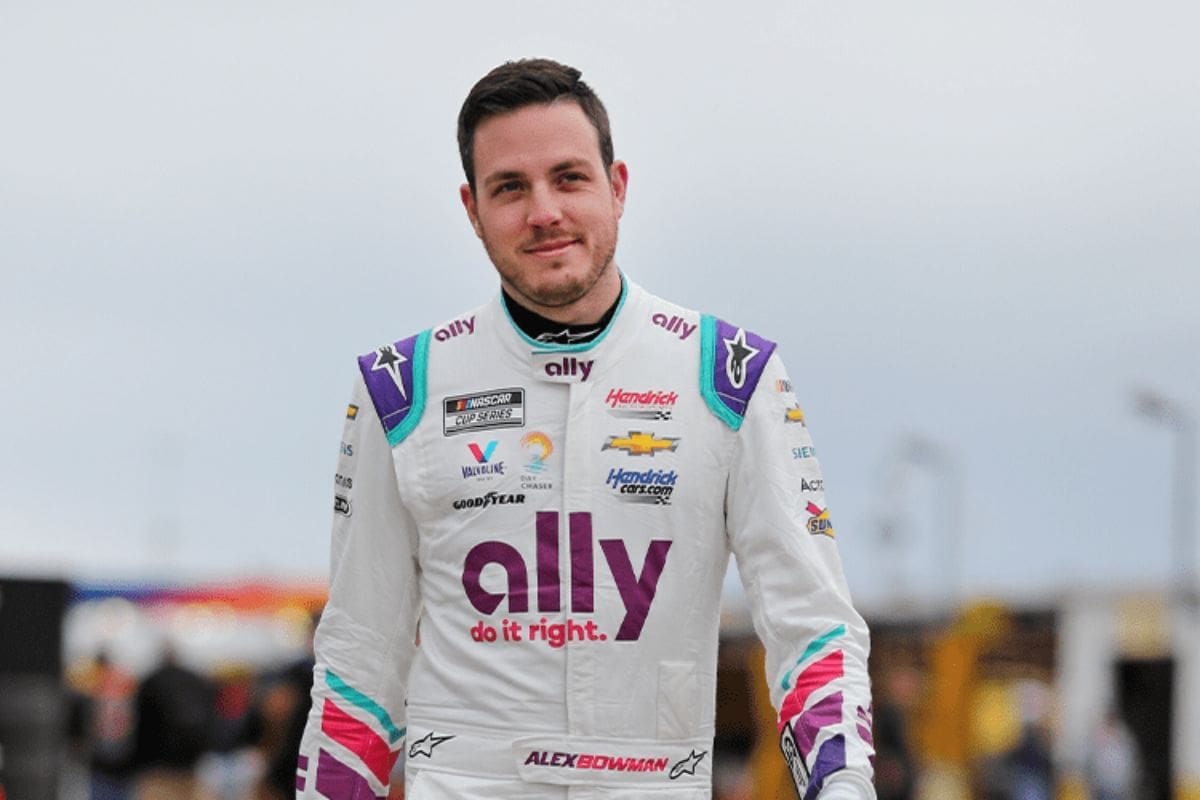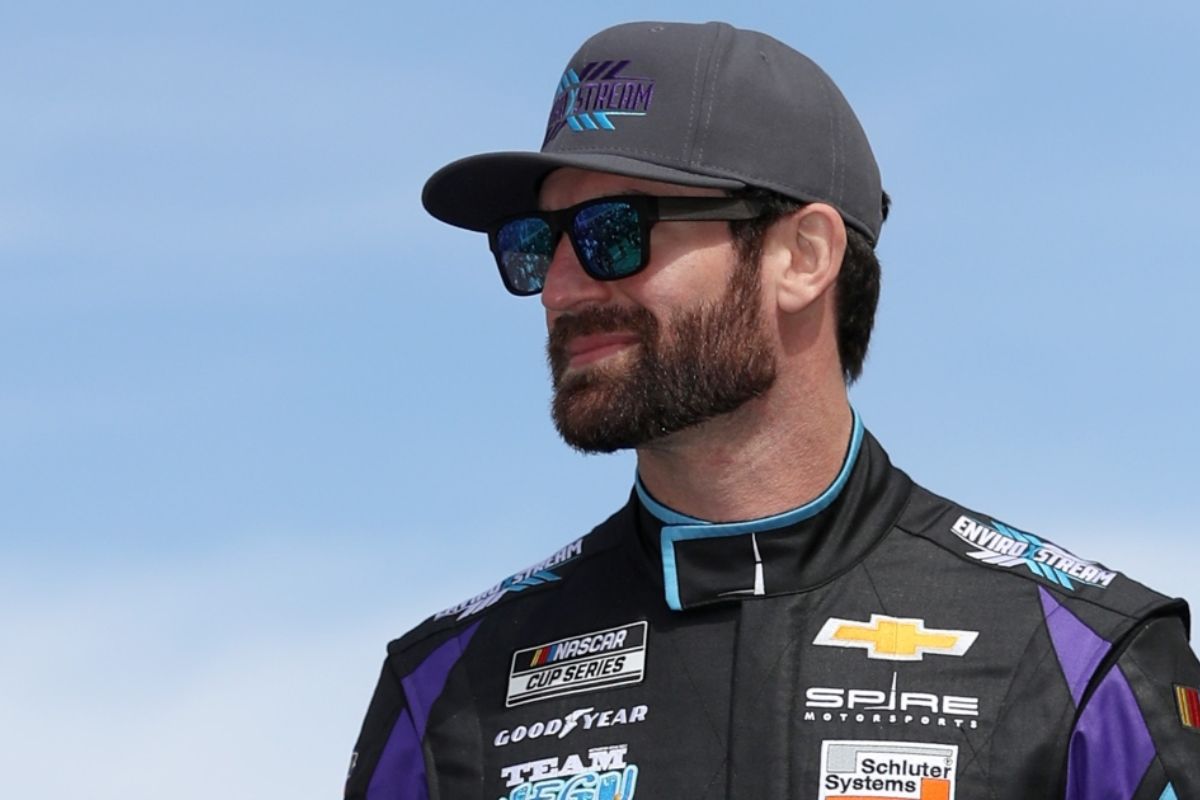Denny Hamlin and Alex Bowman Bring Olympic Events: In a recent conversation, NASCAR icons Denny Hamlin and Alex Bowman ventured into an intriguing comparison between their fellow drivers and Olympic athletes, revealing the multifaceted nature of athleticism within motorsports. Hamlin’s assertion that Joey Logano could excel in the 100-meter sprint invites a deeper examination of the physical demands placed on racers. At the same time, Bowman’s humorous misstep regarding diving rankings highlights the complexities of evaluating talent across disciplines. Their exchange not only entertains but also raises questions about the broader implications of skill transferability in sports, prompting a closer look at how these drivers’ abilities might transcend the racetrack.
Key Highlights
- Denny Hamlin nominated Joey Logano for the 100-meter sprint, showing drivers’ athletic versatility beyond racing.
- Alex Bowman mistakenly ranked Chase Elliott third in diving, highlighting differing perspectives on athletic criteria.
- Carson Hocevar expressed surprise at breaking Olympic inclusion, reflecting evolving views on athletic legitimacy among generations.
- Corey LaJoie humorously assessed NASCAR peers’ gymnastics potential, emphasizing a lighthearted competitive spirit among drivers.
NASCAR Drivers Imagining Olympic Appearances
In an intriguing exploration of athletic versatility, NASCAR drivers recently engaged in a playful yet thought-provoking exercise, envisioning their potential performances in different events amid the excitement surrounding the Paris Olympics. This exercise highlights the multifaceted skill sets of these elite athletes and invites a broader conversation about the nature of competition across different sports.
Denny Hamlin and Alex Bowman, two prominent figures in the NASCAR Cup Series, participated in this engaging activity, evaluating the strengths of their peers while considering their hypothetical Olympic abilities. The contrast between NASCAR racing and traditional Olympic disciplines serves as a fascinating lens through which to gauge the drivers’ unique physical and mental attributes. For instance, the precision, focus, and endurance required in racing could translate well into events that demand comparable attributes, such as cycling or swimming.
Moreover, the drivers’ selections reveal an understanding of the distinct skill sets necessary for success in the Olympic arena. Their choices reflect not only individual strengths but also an appreciation for the diverse athleticism required across different sports. This playful speculation encourages fans and participants to recognize the breadth of talent within the NASCAR community, prompting a deeper appreciation for athleticism that transcends the confines of the racetrack.
Denny Hamlin’s Picks for 100-Meter Sprint
As the conversation around NASCAR drivers exploring Olympic possibilities continues, Denny Hamlin‘s selection of his peers for the 100-meter sprint highlights the unique athletic traits that extend beyond the racetrack.
In a light-hearted yet revealing commentary, Hamlin nominated Joey Logano for the gold medal, attributing his choice to Logano’s impressive running ability, likening him to an ‘ostrich’ regarding speed. This metaphor not only highlights Logano’s potential as a sprinter but also reflects how drivers’ physicality can translate into other sports.
Austin Cindric earned the silver medal in Hamlin’s assessment. Although Hamlin admitted to not having witnessed Cindric’s sprinting firsthand, he referenced Cindric’s performance in pickleball, suggesting that the latter’s skills might not align with the explosive demands of a sprint.
“Joey is P1. I’ve seen it in action. He is an ostrich when it comes to running. Cindric P2, I haven’t seen him run, but I saw him play pickleball; that’s not his sport.” – (hamlin)
Ross Chastain rounded out the rankings with the bronze medal. Hamlin’s evaluation, while informal, highlights the fellowship and competitive spirit prevalent among NASCAR drivers. By analyzing their physical capabilities Hamlin not only displays his peers’ strengths but also brings attention to the diverse athleticism present within the NASCAR community.
Spider monkey!
Ostrich!
Olympians? pic.twitter.com/nCrRvYiJy5
— NASCAR (@NASCAR) July 30, 2024
Alex Bowman’s Mistake in Diving Rankings
Alex Bowman’s recent misjudgment in ranking his fellow NASCAR drivers’ diving capabilities highlights the complexities of athletic evaluation, particularly when comparing physical attributes that influence performance across greatly different sports.
In a playful but revealing exercise, Bowman placed Chase Elliott in a third position, arguing that the more muscular Chris Buescher and Kyle Larson would have an advantage due to their greater density, thereby descending quicker into the water. However, this perspective overlooked critical aspects of diving performance.
“I feel like Chase is going to be worst at this only because Chris and Kyle are much more dense. So they are going to descend quicker in their dive.” – (Bowman)
In diving, the objective is not merely to enter the water quickly but to minimize splash upon entry—a skill that can be notably affected by body composition. A leaner physique, like that of Elliott’s, can provide a competitive edge, allowing for a more streamlined entry and reduced surface disruption. Bowman’s initial assessment failed to account for this fundamental principle, showing that physical attributes must be evaluated in the context of the specific demands of the sport in question.
Upon recognizing his oversight, Bowman quipped, “Yikes, they’re gonna make a big splash,” reflecting an understanding of how the subtleties of athleticism can be misinterpreted when not considered holistically.
Carson Hocevar’s Reaction to Break Dancing as an Olympic Sport
Carson Hocevar’s astonishment at the inclusion of break dancing as an official Olympic sport emphasizes the evolving landscape of athletic competitions and the shifting perceptions of what constitutes elite performance.
“I thought this was an Olympic sport. No way. Is it actually? There’s no shot.” – (Hocevar)
As motorsports enthusiasts grapple with the absence of racing in the Olympic arena, Hocevar’s reaction reflects a broader cultural dialogue surrounding the legitimacy of different athletic disciplines. His surprise highlights a notable moment in sports history, where traditional definitions of athleticism are being challenged by the rise of urban and street sports.
In expressing disbelief at breaking’s Olympic status, Hocevar accidentally reveals the generational divide in how sports are viewed. For many, breaking conjures images of underground dance battles rather than the carefully curated world of Olympic competition. His frank remarks—questioning the sport’s legitimacy—serve as a reminder that for some, the world of competitive dance may still seem foreign.
Moreover, Hocevar’s playful rankings of NASCAR peers in a breaking context show how the lines between sports are increasingly blurred. By suggesting that Denny Hamlin might excel in breaking, he draws parallels between the agility and rhythm required in both dance and racing. This fanciful comparison invites a re-evaluation of athletic skill and highlights how diverse talents can coexist within the sporting community.
“I feel like Denny would win that one. I feel like he probably goes to a lot of clubs. I just want to put Corey last, honestly. I feel like he doesn’t have a lot. I’d say Brad probably back in his days could really get down.” – (Hocevar)
Corey LaJoie’s Gymnastics Rankings
The conversation surrounding athletic ability continues with Corey LaJoie’s confident assessment of his NASCAR peers’ potential in gymnastics, revealing the humor and competitiveness inherent in cross-sport comparisons. LaJoie’s commentary sheds light on his perspective regarding the athletic capabilities of Ryan Blaney, Brad Keselowski, and Kyle Busch, suggesting that these drivers possess skills that could translate into gymnastics excellence.
LaJoie’s rankings are articulated with a mix of playful banter and serious analysis, indicating a competitive spirit that is prevalent in NASCAR and Olympic sports.
LaJoie likens Blaney to a “Spiderman monkey,” suggesting that his agility and flexibility would make him a formidable competitor in gymnastics. Although LaJoie acknowledges Keselowski’s talents in basketball, he humorously relegates him to a lower position in gymnastics ability, indicating that his skills might not translate as effectively.
“I’ve seen Brad Keselowski shoot a basketball, so he’s going to be here on everyone that I pick. RYB is a damn Spiderman monkey bro. He would be like Ninja Warrior, Simone Biles, or whatever you wanna call. And then just I know because he would be better than Keselowski.” – (LaJoie)
News in Brief: Denny Hamlin and Alex Bowman Bring Olympic Events
The playful exchange between Denny Hamlin and Alex Bowman highlights the multifaceted nature of athleticism within NASCAR. By comparing fellow drivers to Olympic athletes, the discussion shows the transferable skills that exist across distinct sports.
This analysis not only fosters an appreciation for the diverse talents inherent in racing but also encourages a broader understanding of how such skills can manifest in different athletic disciplines. Ultimately, this perspective enriches the dialogue surrounding the capabilities of NASCAR competitors.
ALSO READ: Denny Hamlin and Jeff Gordon’s Dance Moves at NASCAR After the Lap Event



